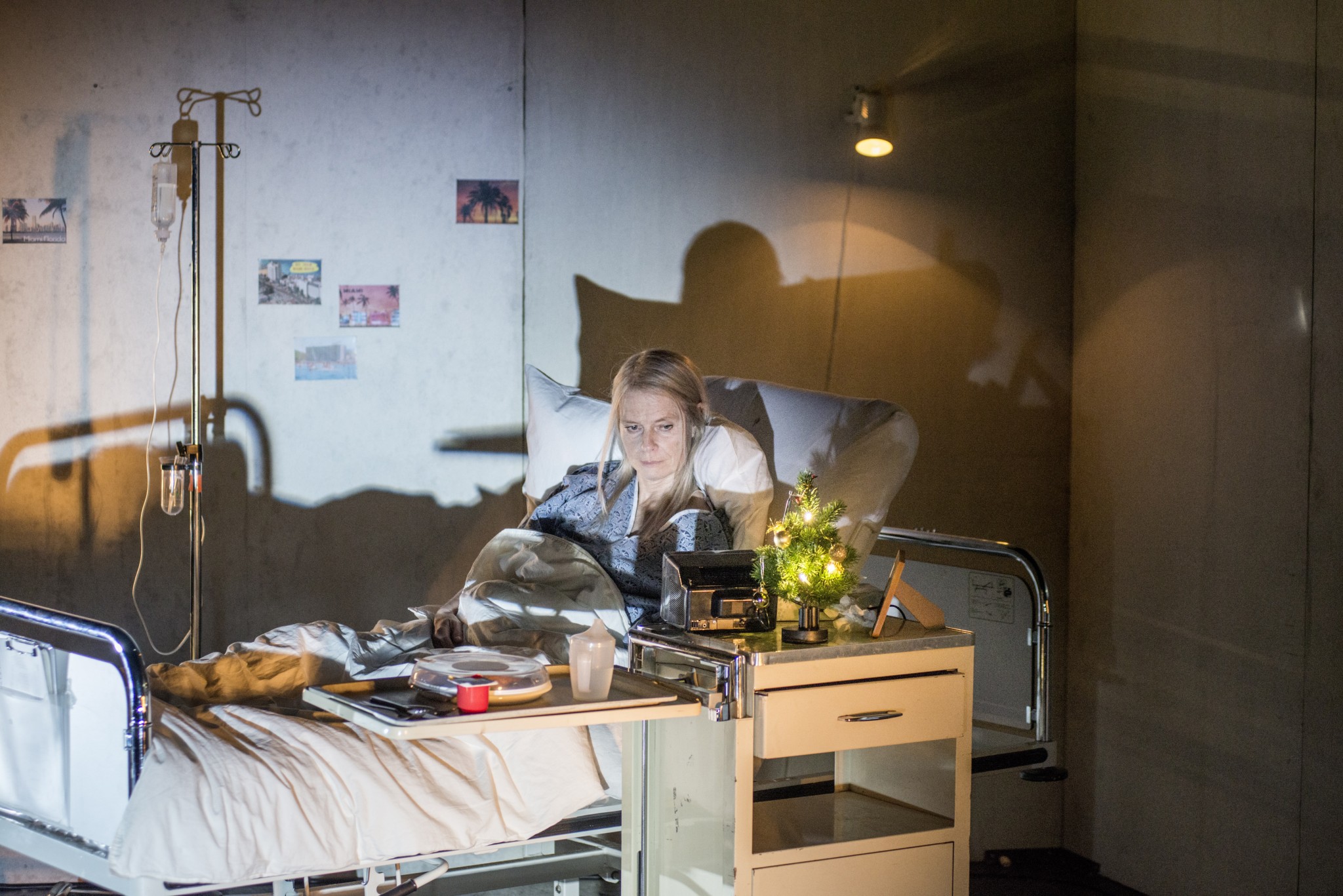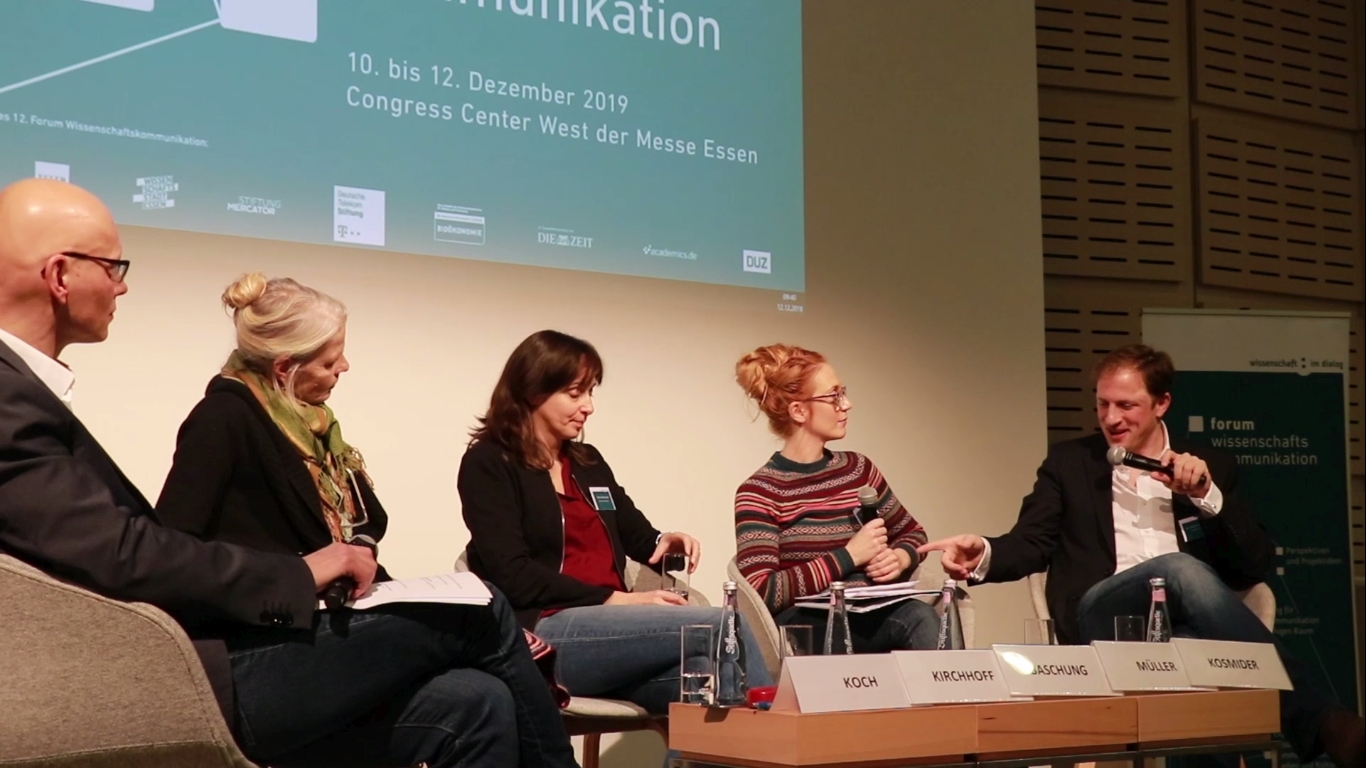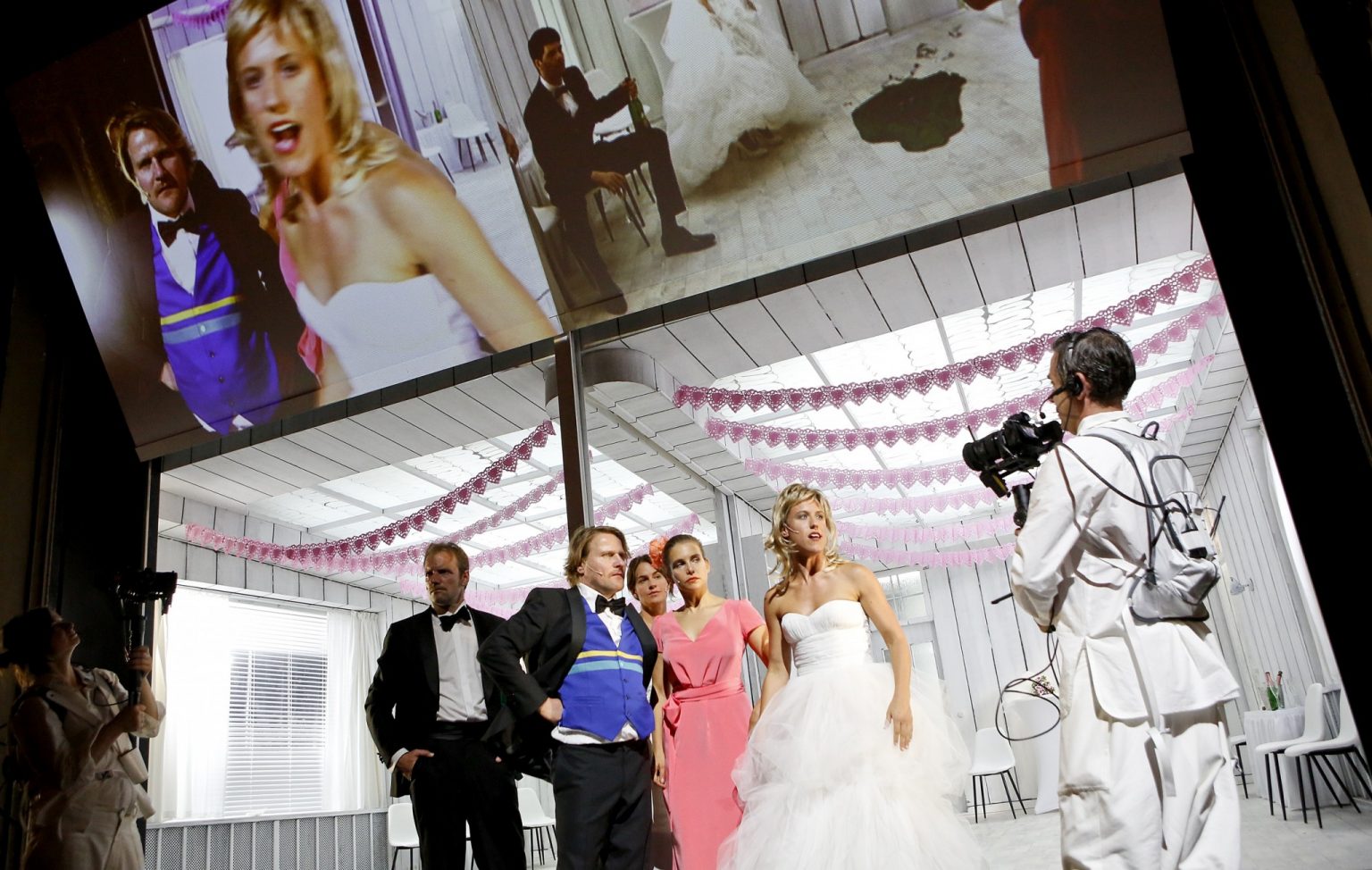Text: Roland Koch | Section: On ‚Art and Science‘
Abstract: Berliner Ensemble and Helmholtz presented their joint project at the twelfth edition of Forum Wissenschaftskommunikation, a conference for science communication.
Introductory note from the editorial team
The twelfth Forum Wissenschaftskommunikation focused on the topic Science meets art and was held from December 10 through 12, 2019, in Essen, Germany. Berliner Ensemble and Helmholtz presented their joint project Theatre meets science at the forum. We invited Roland Koch, Press Spokesperson at the Helmholtz Head Office in Berlin, to write a w/k article based on the presentation.
The stage on the stage
Is 75 minutes enough time for a meaningful discussion about an innovative communication project initiated by one of Germany’s most prestigious theatres and Germany’s largest research organisation? We gave it a try. In the Theatre meets science session, which offered an insight into real-life experiences, five participants took to the stage and engaged in an animated discussion with the audience at Forum Wissenschaftskommunikation.
But what was this session all about? At the beginning of 2018, Berliner Ensemble and Helmholtz initiated a partnership that aims to bring scientists, artists and audiences into direct dialogue with each other. So far, the partners have set up two audience discussions following two respective theatre performances—Mary Page Marlowe (April 24, 2018) and The Parallel World [Die Parallelwelt] (November 16, 2018)—as well as a theme day on April 7, 2019, followed by a performance of Castorf’s reworking of Brecht’s Galileo Galilei. These initial joint projects already encompassed a broad range of topics. Mary Page Marlowe by Tracy Letts depicts the fate of a woman with an addiction—and on the Helmholtz side, a neuropsychologist and an epigeneticist shared their insights on personal responsibility, imprinting and inheritance. Die Parallelwelt, by Kay Voges et.al., explores the uncertainties and synchronous nature of potential realities arising from current theories in the field of quantum physics. A physicist from Helmholtz then weighed in with multifaceted observations that supplemented the performance from a professional perspective. Brecht’s Galileo sheds light on the tension between scientific knowledge and inertia in society—a topic that is more relevant than ever for the scientists at Helmholtz in view of climate research and the changes that lie ahead for society in the wake of research into AI.


Each of these joint events thus took its thematic focus from productions that Berliner Ensemble was staging at the time. Helmholtz contributed through the involvement of scientists who conduct research on topics addressed in the productions. Together with the actors and/or the dramatic advisor, the scientists then initiated a conversation with the audience, so the themes covered on stage could be revisited from a completely different angle. This process opened up additional insights and—probably most importantly—posed new questions. While the theatre hoped to get an inside look at the very latest scientific findings, Helmholtz was interested first and foremost in learning how the art world reacts to its work and addresses current topics. It started as an experiment …
And, if you ask everyone involved, a very successful experiment! Both partners benefited from the format—and the audience found it extremely interesting as well. But what can a theatre and a scientific organisation gain from initiating a project together? How can theatre and the sciences even find common ground? And how can they be compatible partners once they’ve actually come together?
Let’s take a look back at the discussion during Forum Wissenschaftskommunikation. The panel consisted of:
Corinna Kirchhoff: Kirchhoff studied at the Max-Reinhardt-Schule für Schauspiel, a theatre school in Berlin, and made her stage debut under Peter Stein’s direction at the Schaubühne theatre, likewise in Berlin. She has won numerous awards, including Actor of the Year in 1996, and has performed at prestigious theatres including the Burgtheater in Vienna and Schauspielhaus in Zurich as well as at the Salzburg Festival. Kirchhoff is also known for her television and film roles, in addition to her work in theatre. She has been with Berliner Ensemble since the 2017/18 season.
Sibylle Baschung: Baschung is a native of Switzerland and worked as a director’s assistant at Theater Basel while studying history and German philology, in addition to stints at Theater Neumarkt in Zurich and Schauspiel Frankfurt. From 2006 to 2012, she held a teaching post for performance analysis at the Frankfurt University of Music and Performing Arts in Frankfurt am Main. Baschung took over the direction of Schauspiel STUDIO when Oliver Reese became artistic director at Schauspiel Frankfurt in 2009, and assumed the role of head dramatic advisor in 2012. She has been the senior dramatic advisor at Berlin Ensemble since fall 2017.
Eva Verena Müller: Müller completed her artistic education at Folkwang University of the Arts in Essen before working on a wide range of theatrical performances, including at Theater Dortmund as well as in Gera, Leipzig and Moers. She has been in numerous TV productions and films, most recently in All About Me (2018), for example. In addition to her work as an actor, Müller is also an author and scientist at the Forestry Research Institute [Forschungsanstalt für Waldökologie und Forstwirtschaft]. She contributed to the play Die Parallelwelt as both a playwright and actor.
Andreas Kosmider: Kosmider heads up the Strategic Initiatives unit at Helmholtz Head Office and coordinates the strategy process for digitalisation. He previously served as a project manager at the Karlsruhe Institute of Technology. Kosmider holds a degree in astrophysics and is a theatre buff. He initiated the partnership between Helmholtz and the Berliner Ensemble with Sybille Baschung.
Roland Koch, Press Spokesperson for the Helmholtz Head Office in Berlin, hosted the discussion.

So, what does the theatre have to offer researchers? How can they enter into a dialogue with actors where both sides share a mutual understanding? Could Theatre meets science serve as an example of best practice for other theatres and cities?
The partners knew from the start that they didn’t want their project to have a wise and learned professor explaining what it was all about at the end of the play! What made the approach so appealing was that the topic would be jointly explored by two groups of people who were both very curious and contributed their own different ways of doing things, different focal points and different language. The audience felt the same way—the events hosted by the Berliner Ensemble and Helmholtz partnership sold out. Further joint projects are also being planned as soon as the coronavirus situation permits. Other theatres have also expressed interest, and a similar event has since been held at Badisches Staatstheater Karlsruhe. In other words, you could say that the partnership has been a success. Nonetheless, it’s worth taking a look at the finer points, because just copying the partnership might not be so simple.
For starters, the project all began because Baschung (a dramatic advisor) and Kosmider (a scientist) knew each other personally. “That created a foundation of trust that allowed us to put an idea like this out there in the first place without having to worry about any unwanted consequences,” said Kosmider at Forum Wissenschaftskommunikation in Essen. “Working on this basis, we were then able to get started on developing a topic.” And this wasn’t always that easy, Baschung added. After all, she said, artists have a different understanding of topics than scientists and approach them in a different way. She noted that the latter take a rational, fact-based approach, while the arts have more freedom in how things are interpreted and can also address topics on an emotional level. “But at the end of the day, we’re all researchers!”—this was something that Baschung and Kosmider agreed on completely. In this way, they said, the ideas were developed as part of a productive interplay between the partners.
The panel’s host was then interested in learning more about what authors, dramatic advisors and actors need from scientists in order to transfer current developments in science and technology onto the stage, and what the scientific system needs in order to consider the impacts of the latest developments in an appropriate cultural dialogue. Müller and Kosmider were in agreement here: What’s important is continuously seeking out dialogue and taking the time to dig a little deeper into the topics—“and it doesn’t take long before you’re into the details, and you ask yourself what you can get out of an evening at the theatre and, above all, how. But it’s still worthwhile, because that’s the only way you can dig beneath the surface,” said Müller. Everyone also agreed on the importance of finding a common language and having patience and understanding for the other side’s way of thinking. During the third part of the presentation, Kirchhoff read from Friedrich Nietzsche’s The Birth of Tragedy [Die Geburt der Tragödie](1872) and asked how questions, form and knowledge are related. This led to a fascinating discussion on whether new forms of representation lead to new ways of speaking and thinking, which then prompt science to ask new questions in terms of how it views the world. The value that art—and theatre in particular—also has for the growth of scientific knowledge became clear at this point. This philosophical dimension of the discussion prompted an especially lively response and numerous comments from the audience. The scientists on the panel also acknowledged that they, too, had to draw their inspiration from somewhere—without new questions, there can’t be any new findings. At the end of the discussion, it looked as if the four members of the panel could have continued their conversation for hours—and that, having found each other, the project’s partners are clearly looking forward to more.
Vera Meyer also took part in the 12th Forum on Science Communication and is represented in w/k with two contributions:
- Merging Science and Art through Fungi
- The Beauty and the Morbid: Fungi as Source of Inspiration in Contemporary Art
▷ Here you will find further w/k contributions relating to the 12th Forum on Science Communication
▷ See the german w/k contribution Vorlesungstheater [Lecture Theater].
▷ See as well: Eva Verena Müller: Zwischen Wissenschaft und Theater [Between Science and Theater]
Picture above the text: Scene from parallel worlds [Szene aus Parallelwelten] (2018). Photo: Birgit Hupfeld.
How to cite this article
Roland Koch (2020): Theatre meets Science. w/k–Between Science & Art Journal. https://doi.org/10.55597/e6581


Be First to Comment